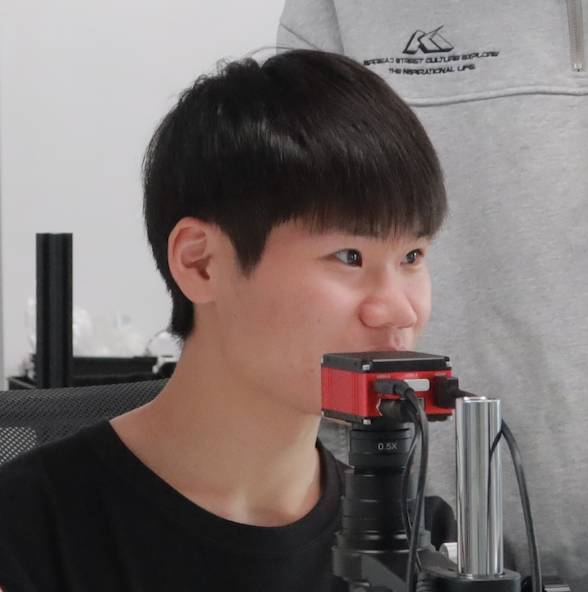After 15+ years in pharmaceutical manufacturing and quality control, I’ve seen firsthand how automated inspection revolutionizes production lines. If you’re struggling with ampoule defects or considering upgrading your inspection process, you’re about to discover exactly how AOI technology can transform your quality control.
What Is AOI For Pharmaceutical Ampoule Inspection?
Automated Optical Inspection (AOI) for pharmaceutical ampoules is a vision-based quality control system that uses specialized cameras, lighting, and software algorithms to detect defects in glass ampoules automatically.
These systems inspect critical parameters including dimensions, wall thickness, cracks, contamination, liquid levels, seal integrity, and print quality at high speeds without human error. AOI replaces manual inspection with consistent, objective evaluation that meets strict pharmaceutical standards while providing documented quality assurance throughout the manufacturing process.
Keep reading to learn how AOI systems work with specific ampoule production challenges, which lighting and camera technologies provide the best results, and how implementing these systems can dramatically reduce defects while meeting regulatory requirements.
Complete Ampoule Manufacturing and Inspection Process
Pharmaceutical ampoule production involves three main stages, each requiring specific quality control measures:
┌─────────────────────────────────────────┐ ┌────────────────────────┐ ┌───────────────────────────────────┐
│ TUBE DRAWING │ │ AMPOULE FORMING │ │ FILLING │
├─────────────────────────────────────────┤ ├────────────────────────┤ ├───────────────────────────────────┤
│ │ │ │ │ │
│ ┌──────────┐ ┌───────────────┐ │ │ ┌──────────┐ │ │ ┌──────────┐ ┌──────────┐ │
│ │ Raw │ │ Dimensional │ │ │ │ Input/ │ │ │ │ Visual │ │ Liquid │ │
│ │ Material │─────▶│ Quality │ │ │ │ Loading │ │ │ │ Cleaning │───▶│ Filling │ │
│ │ Input │ │ Check │ │ │ │ │ │ │ │ │ │ │ │
│ └──────────┘ └───────┬───────┘ │ │ └────┬─────┘ │ │ └──────────┘ └─────┬────┘ │
│ │ │ │ │ │ │ │ │
│ ▼ │ │ ▼ │ │ ▼ │
│ ┌───────────────┐ │ │ ┌────────────────┐ │ │ ┌──────────────┐ │
│ │ Heating/ │ │ │ │ Ampoule Forming│ │ │ │ Final │ │
│ │ Softening │◀──┤─────┤─▶│ (Heating, │ │ │ │ Inspection │ │
│ │ │ │ │ │ Stretching, │ │ │ │ AOI │ │
│ └───────┬───────┘ │ │ │ Neck Sealing) │ │ │ └──────┬───────┘ │
│ │ │ │ └────────┬───────┘ │ │ │ │
│ ▼ │ │ │ │ │ ▼ │
│ ┌───────────────┐ │ │ ▼ │ │ ┌──────────────┐ │
│ │ Drawing │ │ │ ┌─────────────┐ │ │ │ Printing, │ │
│ │ & Stretching │───┤─────┤───▶│ Dot Marking │ │ │ │ Coding & │ │
│ │ │ │ │ │ & Printing │ │ │ │ Labeling │ │
│ └───────┬───────┘ │ │ └─────┬───────┘ │ │ └──────┬───────┘ │
│ │ │ │ │ │ │ │ │
│ ▼ │ │ ▼ │ │ ▼ │
│ ┌───────────────┐ │ │ ┌─────────────┐ │ │ ┌──────────────┐ │
│ │ Cutting │ │ │ │ AOI │ │ │ │ Packaging │ │
│ │ │───┤─────┤───▶│ Inspection │ │ │ │ & Shipping │ │
│ └───────────────┘ │ │ │ │ │ │ │ │ │
│ │ │ └─────────────┘ │ │ └──────────────┘ │
└─────────────────────────────────────────┘ └────────────────────────┘ └───────────────────────────────────┘
Key Quality Inspection Points Throughout the Process:
Tube Drawing Stage AOI Checks:
- Dimensional accuracy of glass tubes
- Wall thickness consistency
- Surface defects and contamination
- Stress patterns in glass
Ampoule Forming Stage AOI Checks:
- Body dimensions and symmetry
- Neck formation quality
- Bottom seal integrity
- Wall thickness distribution
- Micro-cracks and structural flaws
Filling Stage AOI Checks:
- Fill level precision
- Foreign particles in liquid
- Cap seal integrity
- Print quality and code accuracy
- Final dimensional verification
How Ampoule Manufacturing Creates Unique Inspection Challenges
When I first started working with pharmaceutical glass production, I was amazed at how complex the ampoule manufacturing process really is. Each step introduces potential quality issues that must be detected.
The process starts with borosilicate glass tubes fed into forming machines where burners heat the glass until it softens. Precise mechanical stretching and forming creates the distinctive ampoule shape, followed by flame sealing of the bottom and shaping of the neck. After cooling in an annealing oven to relieve internal stress, additional processes add break rings, coding, and printing.
This complex thermal and mechanical process creates multiple inspection challenges:
- Glass thickness variations that can affect strength
- Micro-cracks that may compromise sterility
- Dimensional inconsistencies affecting filling equipment compatibility
- Contamination from production environment
- Print quality issues affecting product identification
- Seal integrity problems that could allow contamination
Traditional manual inspection simply can’t keep up with modern production speeds while maintaining the necessary accuracy. That’s where AOI systems change everything.
The Critical Components Of An Effective Ampoule AOI System
A pharmaceutical-grade AOI system consists of four essential elements that work together to detect even the most subtle defects:
Specialized Lighting Configurations
The lighting system is arguably the most important component, as it makes defects visible to cameras. For ampoule inspection, multiple lighting approaches are needed:
- Parallel Backlight: Creates silhouettes for precise diameter measurement
- Diffuse Lighting: Reveals surface contamination and dirt
- Infrared Backlighting: Helps measure wall thickness (particularly useful for critical areas)
- Red Light Illumination: Enhances visibility during hot forming processes
I’ve seen plants struggle for months with faulty inspections before realizing their lighting configuration was inadequate for certain defect types.
High-Resolution Industrial Cameras
The camera system captures the images that will be analyzed for defects. Key specifications include:
- Resolution: Typically 4K (3840×2160) for detailed inspection
- Frame rates: 30-60 FPS to keep up with production speeds
- Sensor type: Usually Sony CMOS sensors for industrial reliability
- Telecentric lenses: For undistorted measurements regardless of distance
Multiple cameras positioned at different angles ensure complete coverage of the ampoule from every perspective.
Advanced Image Processing Software
The software is the brain of the system, using algorithms to identify defects in real-time:
- Dimensional analysis for precise measurements
- Pattern matching to identify expected features
- Contrast analysis to detect subtle cracks
- Color recognition for contamination detection
- Optical character recognition (OCR) for print verification
Modern systems incorporate machine learning to continuously improve detection accuracy based on historical data.
Integration With Production Equipment
For maximum effectiveness, AOI systems should integrate directly with production machinery to:
- Provide real-time feedback for process adjustment
- Automatically reject defective ampoules
- Log quality data for regulatory compliance
- Optimize production parameters based on inspection results
Critical Inspection Parameters For Pharmaceutical Ampoules
An effective AOI system must inspect multiple quality aspects simultaneously:
Dimensional Accuracy
Precise measurement of:
- Overall ampoule height and diameter
- Wall thickness throughout the body
- Neck dimensions and break point
- Bottom curvature and thickness
Even minor dimensional variations can cause problems during filling operations or affect drug dosage, making this inspection critical.
Surface And Structural Integrity
Detection of:
- Micro-cracks that could compromise sterility
- Stress patterns that indicate potential breakage points
- Air bubbles trapped within glass
- Surface scratches
One pharmaceutical client I worked with reduced customer complaints by 87% after implementing crack detection using specialized backlighting techniques.
Contamination Detection
Identification of:
- Particle contamination inside empty ampoules
- Foreign material embedded in glass
- Discoloration indicating material issues
- Surface residue from manufacturing
Print And Coding Verification
Validation of:
- Batch code readability
- Expiration date clarity
- Logo positioning and quality
- Break-line marking alignment
Post-Filling Inspection
Additional checks after liquid filling:
- Fill level accuracy
- Particulate matter in solution
- Seal integrity
- Color uniformity of contents
Advanced Technologies Improving Ampoule AOI
Recent innovations have dramatically improved inspection capabilities:
Telecentric Lens Systems
These specialized lenses eliminate perspective distortion, enabling highly accurate dimensional measurements regardless of the ampoule’s position. Unlike conventional lenses, telecentric systems provide consistent measurements even when objects move slightly during production.
Long Working Distance Setups
By positioning cameras farther from the inspection area, these systems avoid interference from heat during the forming process while providing more space for mechanical components.
Infrared Wall Thickness Measurement
This non-contact method measures glass thickness through optical properties rather than physical contact, allowing for continuous inspection without slowing production.
AI And Machine Learning Integration
Modern systems now incorporate self-learning algorithms that:
- Reduce false rejections over time
- Identify emerging defect patterns before they become widespread
- Adjust sensitivity based on historical data
- Correlate defects with specific production parameters
Real-World Benefits Of Implementing AOI For Ampoule Production
Companies implementing these systems typically see multiple measurable improvements:
Quality Improvements
- Defect detection rates increase from typical manual inspection rates of 70-80% to 98-99%
- Consistent inspection criteria eliminate inspector fatigue and subjectivity
- Complete documentation of inspection results for each batch
Cost Savings
- Reduced waste from earlier detection of process issues
- Lower labor costs compared to manual inspection
- Fewer customer complaints and potential recalls
- Optimized production parameters based on inspection feedback
Regulatory Compliance
- Full documentation of inspection parameters and results
- Consistent application of predefined quality standards
- Traceability of all inspected units
- Objective evidence of quality control for audits
Production Efficiency
- Inspection speeds up to 400 ampoules per minute
- Real-time feedback for production parameter adjustment
- Reduced downtime through predictive maintenance
- Faster changeover between product runs
Implementation Considerations For Pharmaceutical Manufacturers
If you’re considering implementing AOI for your ampoule production, keep these factors in mind:
Integration With Existing Production Lines
The best systems can be retrofitted to existing production lines without major modifications. Look for:
- Modular designs that fit your space constraints
- Flexible mounting options
- Compatible communication protocols
- Minimal impact on line speed
Validation Requirements
Pharmaceutical equipment requires thorough validation:
- Factory acceptance testing (FAT)
- Site acceptance testing (SAT)
- Installation qualification (IQ)
- Operational qualification (OQ)
- Performance qualification (PQ)
Training And Support
Successful implementation depends on:
- Comprehensive operator training
- Technical support availability
- Regular maintenance schedules
- Software update policies
Return On Investment Calculation
When calculating ROI, include:
- Reduced quality control labor costs
- Decreased scrap and rework
- Fewer customer complaints and returns
- Regulatory compliance benefits
- Potential production speed increases
Conclusion: The Future Of Pharmaceutical Ampoule Inspection
The pharmaceutical industry continues to move toward complete automation of inspection processes. As AOI systems become more sophisticated through AI and machine learning integration, we can expect:
- Near-perfect defect detection rates
- Predictive quality control that anticipates process drift
- Complete integration with Industry 4.0 manufacturing systems
- Reduced reliance on destructive testing methods
For manufacturers still using manual or semi-automated inspection, the question is no longer if you should implement AOI, but when and how to do it most effectively.
With regulatory requirements becoming stricter and cost pressures increasing, automated optical inspection provides the ideal solution for ensuring pharmaceutical ampoule quality while optimizing production efficiency











